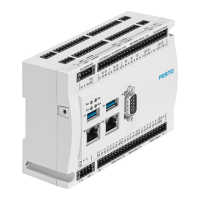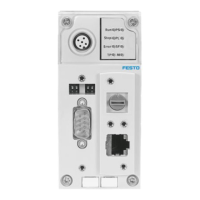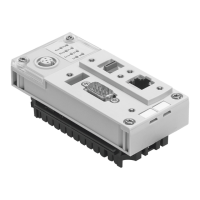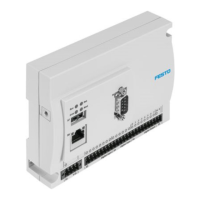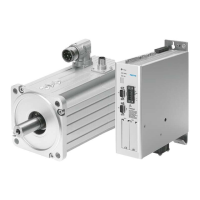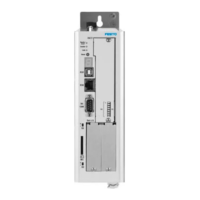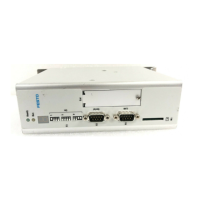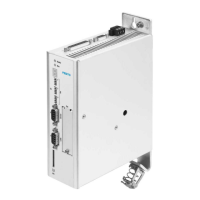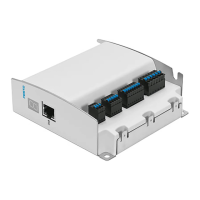System manual CECX / Commissioning of CoDeSys and control
MAC-ID is the fixed address that clearly identifies an Ethernet device (Me-
dia Access Control).
IP address
An IP address according to the standard IPv4 is generally specified with 4
decimal numbers divided by points (each 1 byte).
Example for an IP address: 192.168.181.1
Both a network and an individual participant are allocated an IP address in
the network. The IP address contains:
the Net ID (specifies a network address) and
the Host ID (specifies the address of an individual participant in the
network). It must be clearly defined, i.e. no two terminal devices can be
operated with the same Host ID in the network.
A so-called net mask (subnet mask) is used to determine which numbers of
an IP address represent the Net ID and the Host ID.
Net classes
With a "0" as wildcard the net mask for IP addresses defines which bits are
used for addressing the participant (Host ID). A 1 as wildcard defines which
bits the network address (Net ID) contains. The number of these bits de-
termines which classes the networks belong to:
Net class Net mask Description
A 255.0.0.0 Large network
B 255.255.0.0 Medium-sized network
C 255.255.255.0 Small network with a maximum of
254 participants
Example:
In a small network with the net mask 255.255.255.0, at the IP address
192.168.181.1 the Net ID is 192.168.181 and the Host ID is 1.
If (in a different, medium-sized network) net mask 255.255.0.0 is set, then
at IP address 192.169.100.1, the Net ID is 192.169 and the Host ID is
100.1.
Gateway
Networks with different Net IDs are connected together via routers or gate-
ways. If a network participant is to send data to a participant in a different
network, the IP address of the gateway must be additionally specified. For
addressing in the IP three details must be specified:
IP address
IP net mask
IP address of the gateway
CECX-II 7-11
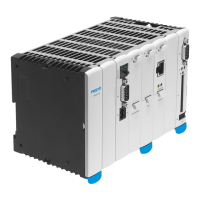
